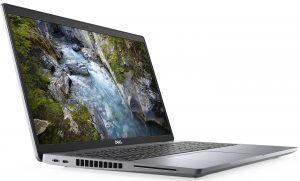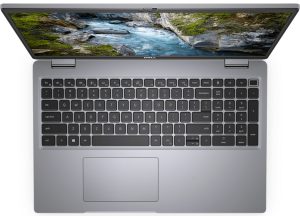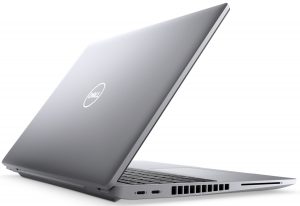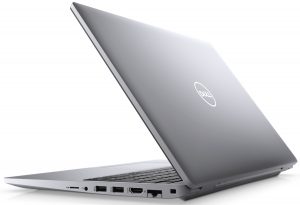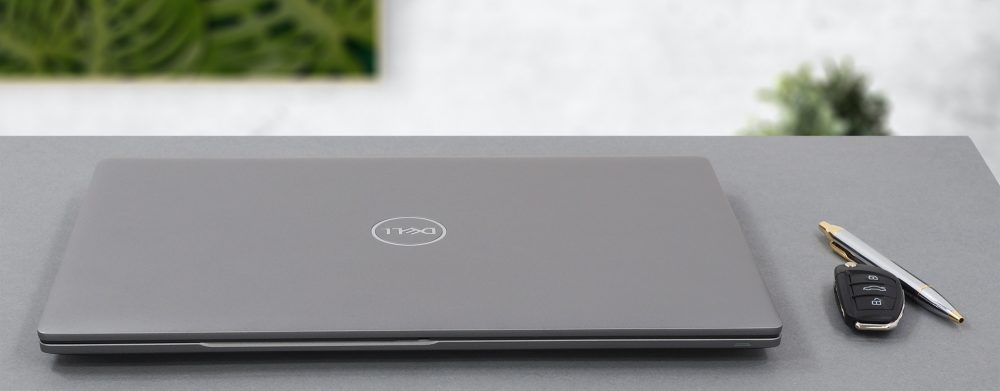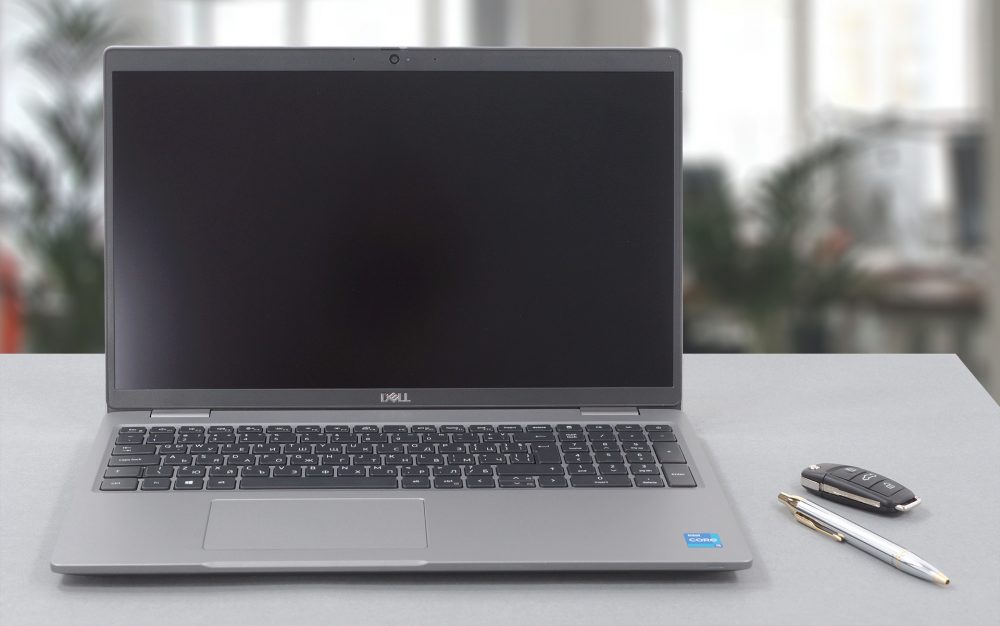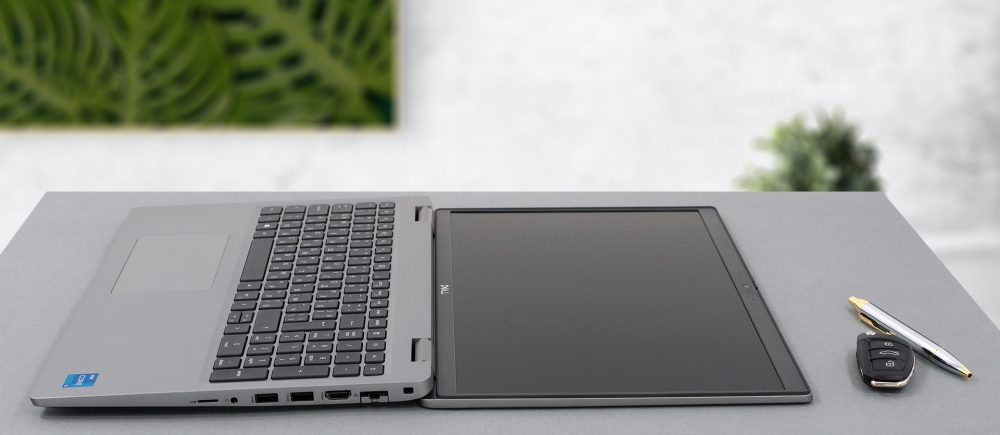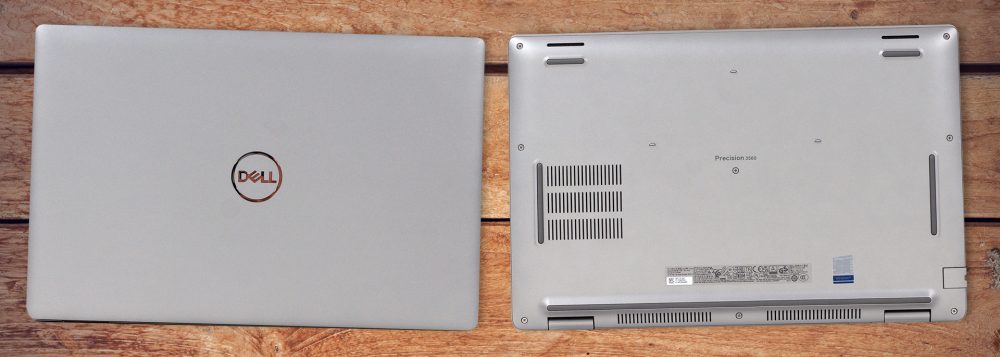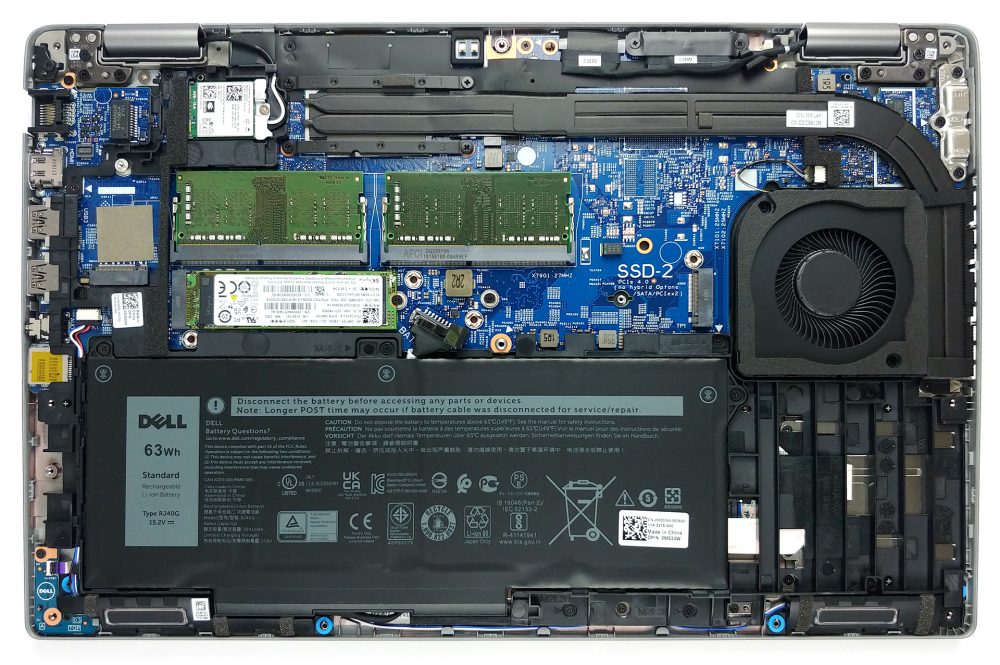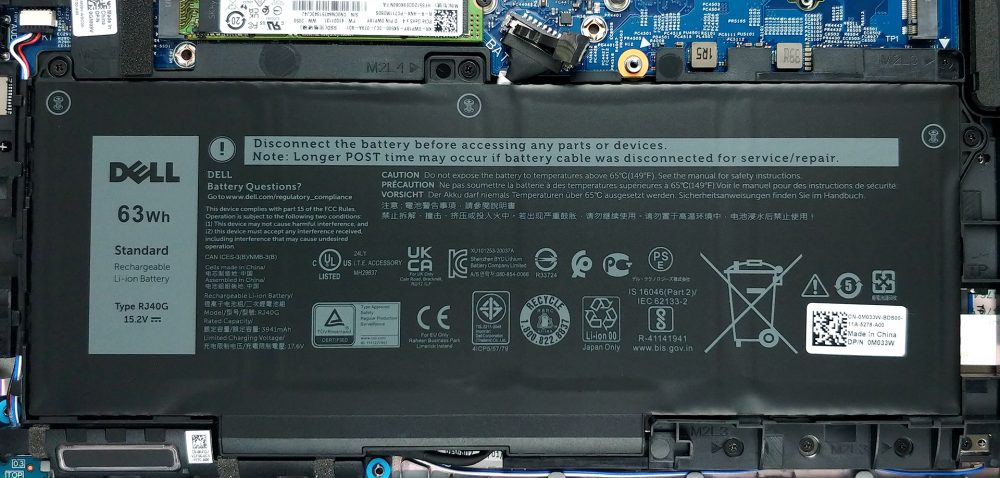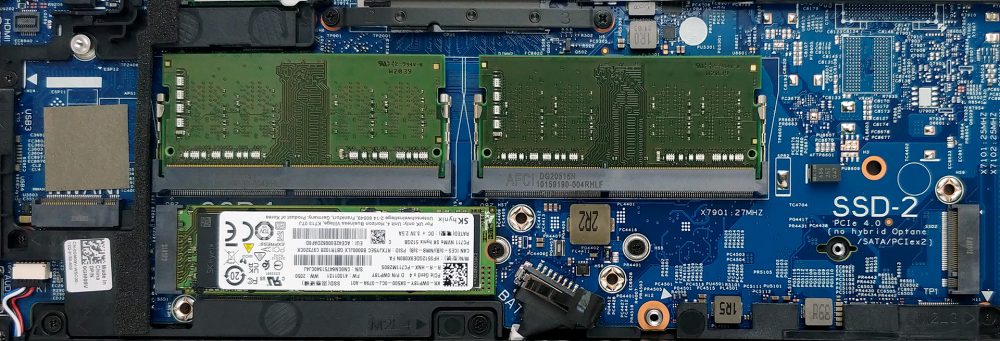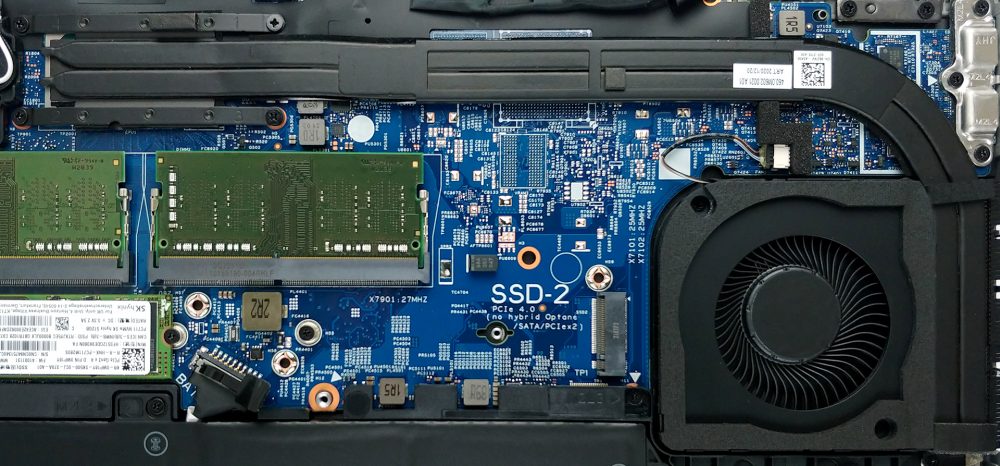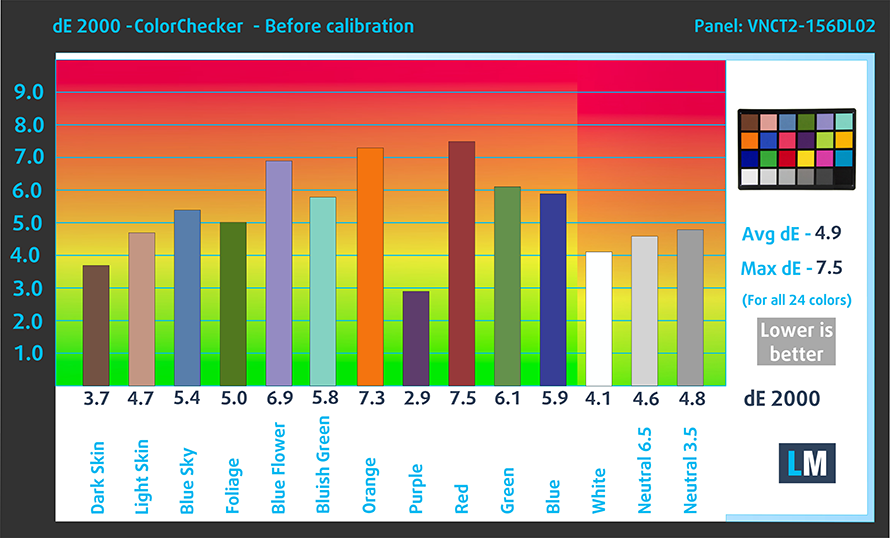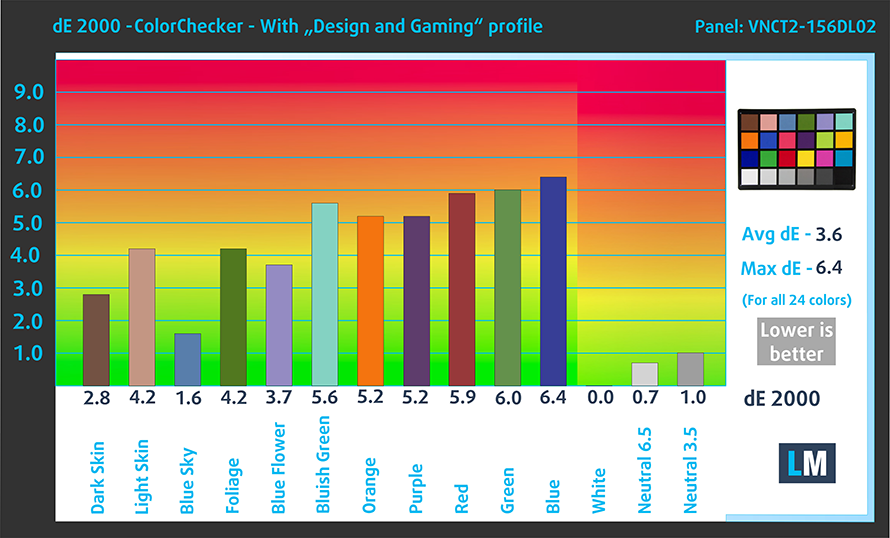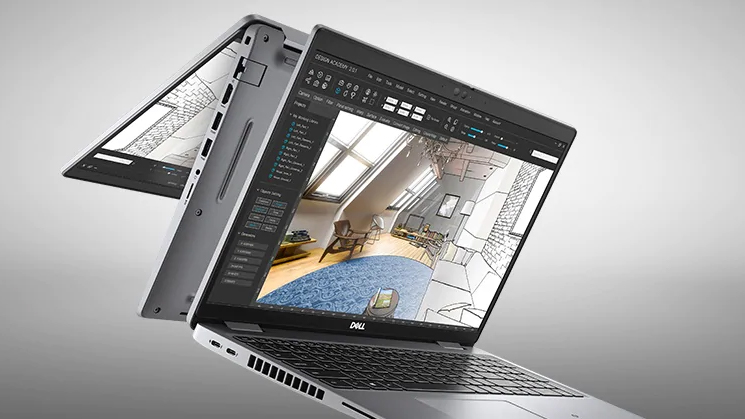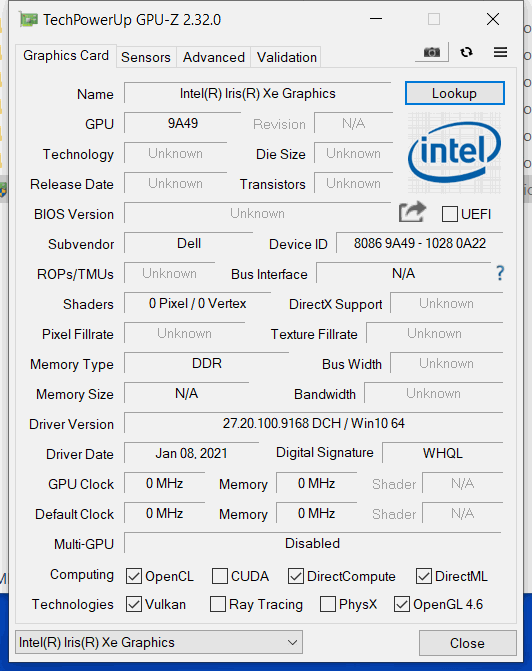Dell Precision 15 3560 review – let’s talk about mobile workstations
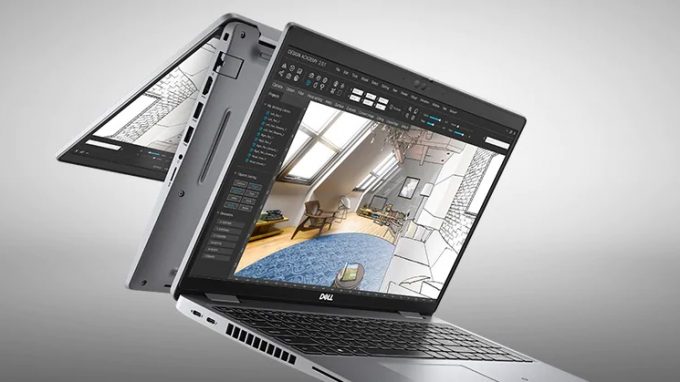 The words mobile and workstation are so far from each other, that when someone mentions them in the same sentence, it provokes laughter. However, as time passed, mobile processors became more and more powerful. This could only mean one thing… mobile workstations might actually be something real.
The words mobile and workstation are so far from each other, that when someone mentions them in the same sentence, it provokes laughter. However, as time passed, mobile processors became more and more powerful. This could only mean one thing… mobile workstations might actually be something real.
And this is where the Dell Precision 15 3560 comes into place. It can be outfitted with up to the Core i7-1185G7 in a combination with the NVIDIA Quadro T500 – a professional-grade graphics card, based on the GeForce MX450. Also, there are configurations bundled with a 4K IPS panel, which should make work on the go a pleasant and productive experience.
On the other hand, we’ve seen laptops with such hardware fail before, or not have enough performance to be considered as workstations. In the following lines, you will see how this one fares against the odds.
You can check the prices and configurations in our Specs System: https://laptopmedia.com/series/dell-precision-15-3560/
Contents
Specs Sheet
- HDD/SSD
- fino a 2000GB SSD
- Slot M.2
- 1x M.2 PCIe 4.0 x4 + 1x M.2 PCIe 3.0 x4 Vedi foto
- RAM
- up to 64GB
- OS
- Windows 10 Pro, Windows 11 Pro, Windows 10 Home
- Batteria
- 42Wh, 3-cell, 63Wh, 4-cell, 64Wh, 4-cell
- Materiale del corpo
- Plastic / Polycarbonate
- Dimensioni
- 358 x 232 x 19.9 ~ 22.2 mm (14.09" x 9.13" x 0.78")
- Peso
- 1.59 kg (3.5 lbs)
- Porte e connettività
- 2x USB Type-C
- Thunderbolt 4
- 2x USB Type-A
- 3.2 Gen 2 (10 Gbps)
- HDMI
- 2.0
- Lettore di schede
- SD
- Wi-Fi
- 802.11ax
- Bluetooth
- 5.1
- Jack audio
- 3.5mm Combo Jack
- Caratteristiche
- Lettore di impronte digitali
- optional
- Tastiera retroilluminata
- optional
- Microfono
- Digital Array Microphones
- Altoparlanti
- 2 Speakers, MaxxAudio Pro
- Unità ottica
Tutti Dell Precision 15 3560 configurazioni
What’s in the box?
Inside the package, we only found some paper manuals, the laptop, itself, and a 130W USB Type-C power brick.
Design and construction
Now, we are pretty confident that this notebook’s body is made entirely out of plastic. In fact, it appears to share the same design as the Latitude 15 5520, including the 1.59 kg weight and 19.9-22.2mm thickness. Despite the plastic material, both the chassis and the lid are pretty strong against twists and bends.
Here, the lid cannot be opened with a single hand, which is a bummer. Thankfully, though, the size of the bezels around the display is pretty balanced, and the top one houses the Web camera, which comes in HD and Full HD trims plus an optional IR face recognition sensor. Additionally, there is a privacy shutter to hide you from the prying eyes of the CIA and the federals.
Next, let’s take a look at the keyboard, which has a backlight, a full-sized NumberPad, and unfortunately for some – no trackpoint. The experience it provides is okay, with the key travel being decent, and the feedback being slightly soft for our likings. In addition to that, we observed some slight deck flex, but it is nothing to worry about.
Now, probably the worst thing about this laptop is its touchpad. Not only it lacks dedicated buttons, whatsoever, but the tracking is not great, and it is inconsistent.
How about the bottom of the laptop? Well, there are the speaker cutouts, which hide two 2W units. Right beneath the fan, there is the ventilation grill, while the hot air escapes from the left side of the notebook.
Ports
On the left side, there are two Thunderbolt 4 connectors, either of which can be used for charging the notebook, as well as a Smart Card reader. Then, on the right, you get a security wedge slot, an RJ-45 connector, followed by an HDMI 2.0 connector, two USB Type-A 3.2 (Gen. 1) ports, an audio jack, and a MicroSD card slot. Also, there is a SIM card slot on the back.
Disassembly, upgrade options, and maintenance
The procedure of getting inside this notebook requires the removal of the bottom panel. This means you need to undo 8 Phillips-head screws and pry the panel with a plastic tool.
This model can be found with one of two batteries. You get either a 42Wh or a 63Wh solution.
Thankfully, this portable workstation comes with two RAM SODIMM slots which fit up to 64GB in total, working at dual-channel mode. As for the storage, there are two M.2 slots, one of which can fit PCIe Gen 4 drives.
Cooling-wise, you get two long heat pipes, which lead to a side-mounted heat sink.
Display quality
Dell Precision 15 3560 comes with a Full HD IPS panel, model number VNCT2-156DL02 (NCP0057). Its diagonal is 15.6″ (39.62 cm), and the resolution – 1920 х 1080p. Additionally, the screen ratio is 16:9, the pixel density – 142 ppi, their pitch – 0.18 x 0.18 mm. The screen can be considered Retina when viewed from at least 60 cm (from this distance, the average human eye can’t see the individual pixels).
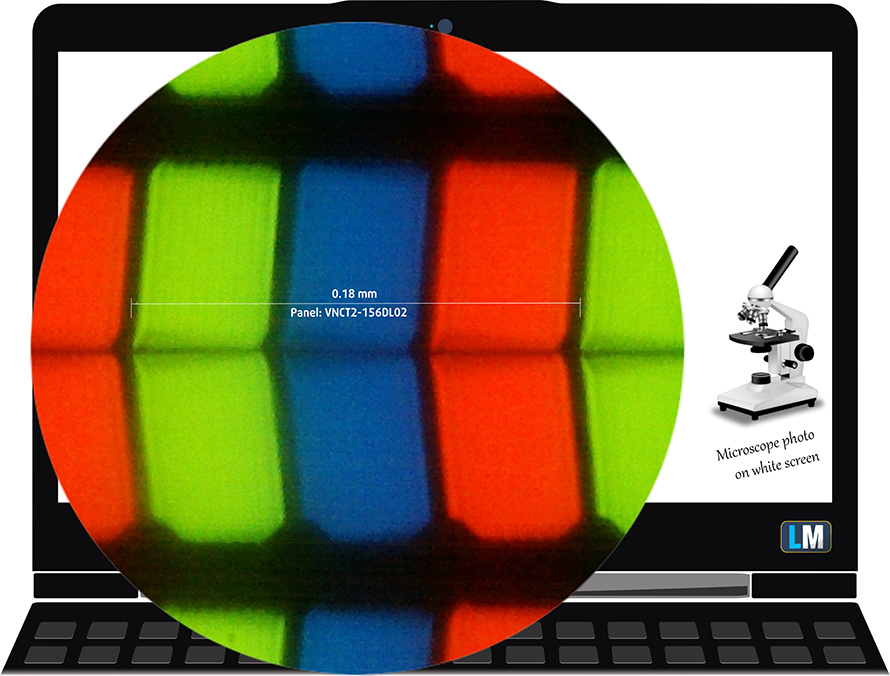
The viewing angles are good. We offer images at different angles to evaluate the quality.

The maximum measured brightness is 330 nits (cd/m2) in the middle of the screen and 310 nits (cd/m2) average across the surface with a maximum deviation of 9%. The Correlated Color Temperature on a white screen and at maximum brightness is 6080K (average) – warmer than the 6500K optimum for sRGB.
In the illustration below you can see how the display performs from a uniformity perspective. The illustration below shows how matters are for operational brightness levels (approximately 140 nits) – in this particular case at 59% Brightness (White level = 142 cd/m2, Black level = 0.09 cd/m2).
Values of dE2000 over 4.0 should not occur, and this parameter is one of the first you should check if you intend to use the laptop for color-sensitive work (a maximum tolerance of 2.0 ). The contrast ratio is very good – 1500:1.
To make sure we are on the same page, we would like to give you a little introduction to the sRGB color gamut and the Adobe RGB. To start, there’s the CIE 1976 Uniform Chromaticity Diagram that represents the visible specter of colors by the human eye, giving you a better perception of the color gamut coverage and the color accuracy.
Inside the black triangle, you will see the standard color gamut (sRGB) that is being used by millions of people on HDTV and on the web. As for the Adobe RGB, this is used in professional cameras, monitors, etc for printing. Basically, colors inside the black triangle are used by everyone and this is the essential part of the color quality and color accuracy of a mainstream notebook.
Still, we’ve included other color spaces like the famous DCI-P3 standard used by movie studios, as well as the digital UHD Rec.2020 standard. Rec.2020, however, is still a thing of the future and it’s difficult for today’s displays to cover that well. We’ve also included the so-called Michael Pointer gamut, or Pointer’s gamut, which represents the colors that naturally occur around us every day.
The yellow dotted line shows Dell Precision 15 3560’s color gamut coverage.
Its display is limited just to 55% of the sRGB/ITU-R BT.709 (web/HDTV standard) in CIE1976.
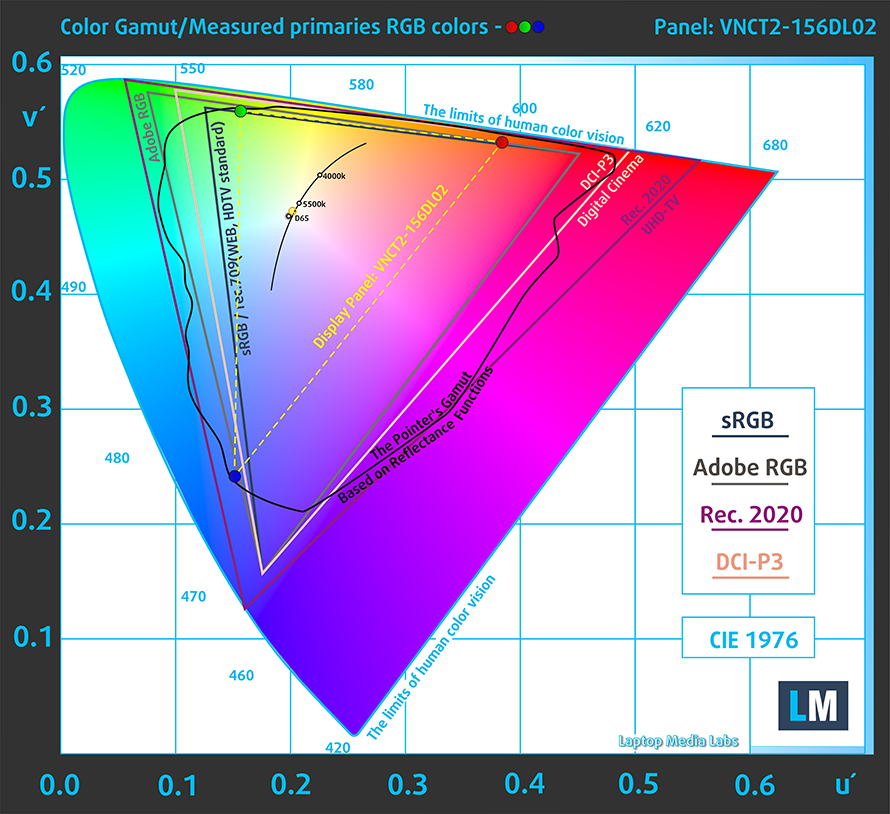
Our “Design and Gaming” profile delivers optimal color temperature (6500K) at 140 cd/m2 luminance and sRGB gamma mode.
We tested the accuracy of the display with 24 commonly used colors like light and dark human skin, blue sky, green grass, orange, etc. You can check out the results at factory condition and also, with the “Design and Gaming” profile.
Below you can compare the scores of Dell Precision 15 3560 with the default settings (left), and with the “Gaming and Web design” profile (right).
The next figure shows how well the display is able to reproduce really dark parts of an image, which is essential when watching movies or playing games in low ambient light.
The left side of the image represents the display with stock settings, while the right one is with the “Gaming and Web Design” profile activated. On the horizontal axis, you will find the grayscale, and on the vertical axis – the luminance of the display. On the two graphs below you can easily check for yourself how your display handles the darkest nuances but keep in mind that this also depends on the settings of your current display, the calibration, the viewing angle, and the surrounding light conditions.
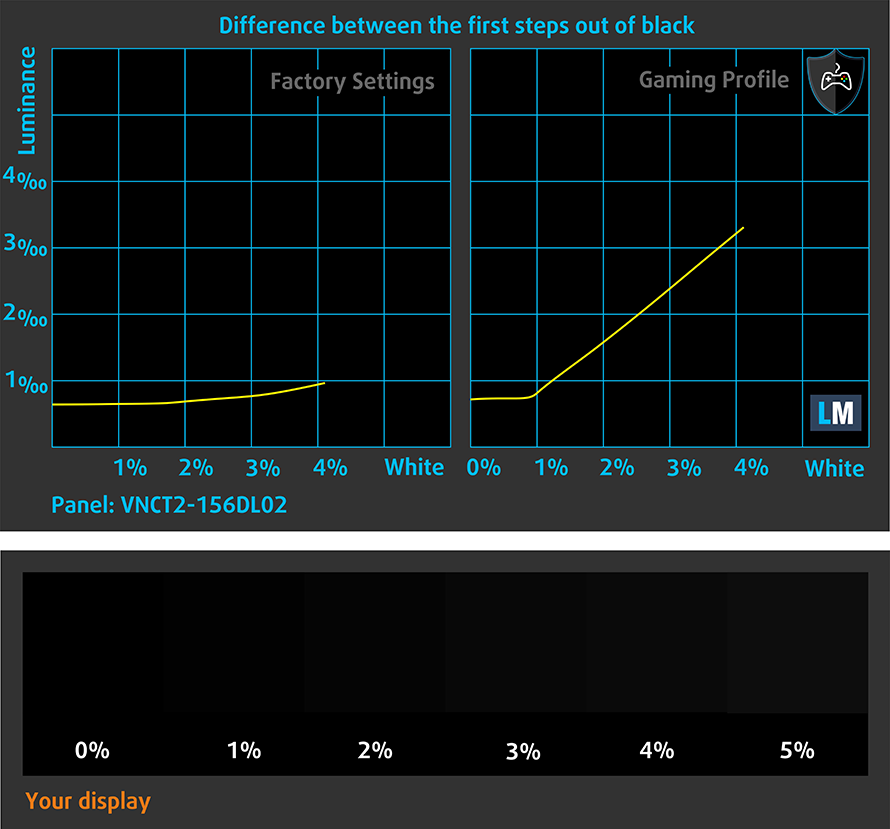
Response time (Gaming capabilities)
We test the reaction time of the pixels with the usual “black-to-white” and “white-to-black” method from 10% to 90% and vice versa.
We recorded Fall Time + Rise Time = 27 ms.
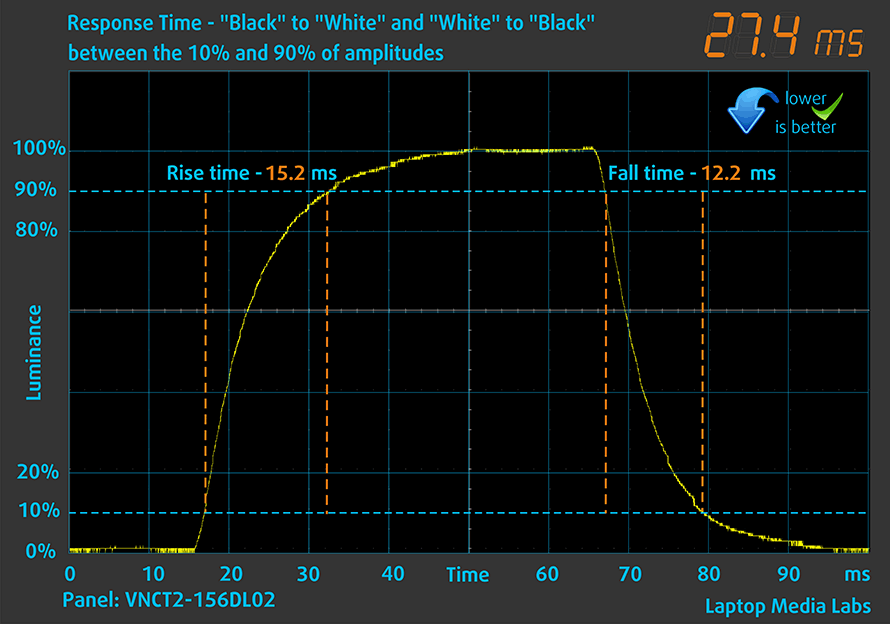
After that, we test the reaction time of the pixels with the usual “Gray-to-Gray” method from 50% White to 80% White and vice versa between 10% and 90% of the amplitude.
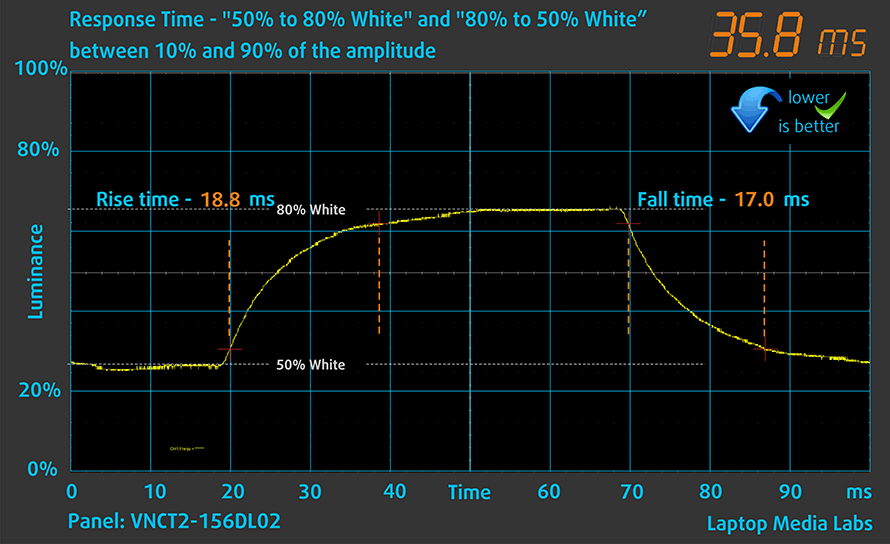
Health impact – PWM / Blue Light
PWM (Screen flickering)
Pulse-width modulation (PWM) is an easy way to control monitor brightness. When you lower the brightness, the light intensity of the backlight is not lowered, but instead turned off and on by the electronics with a frequency indistinguishable to the human eye. In these light impulses, the light/no-light time ratio varies, while brightness remains unchanged, which is harmful to your eyes. You can read more about that in our dedicated article on PWM.
Dell Precision 15 3560’s backlight is not PW-modulated above 88 nits of brightness. This makes it comfortable in general usage, but should you use it in dark environments, there will be flickerings with a frequency of 1050Hz.
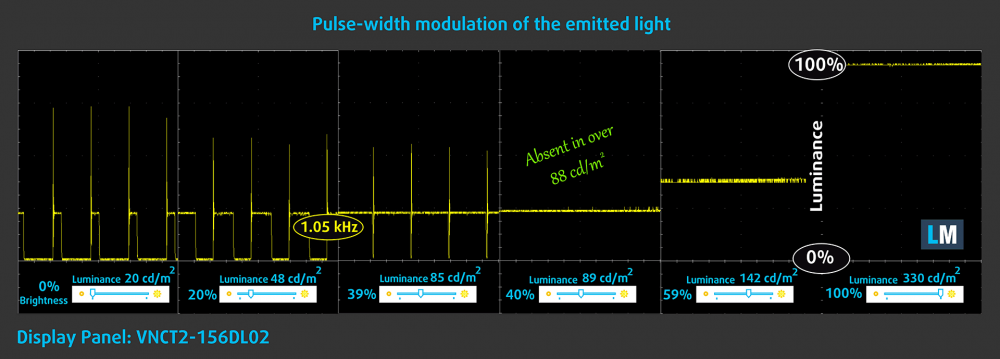
Blue light emissions
Installing our Health-Guard profile not only eliminates PWM but also reduces the harmful Blue Light emissions while keeping the colors of the screen perceptually accurate. If you’re not familiar with the Blue light, the TL;DR version is – emissions that negatively affect your eyes, skin, and your whole body. You can find more information about that in our dedicated article on Blue Light.
Conclusions
Dell Precision 15 3560’s IPS panel has a Full HD resolution, comfortable viewing angles, a good contrast ratio, and a non-flickering backlight above 88 nits. Keep in mind that above that value (corresponding to 40% in Windows), the pulsations have a low frequency, and using our Health-Guard profile will eliminate the negative effect. Also, it had a low color coverage of only 55% of the sRGB gamut, and our unit showed a high nonuniformity of the colors, compared to the middle of the screen.
Buy our profiles
Since our profiles are tailored for each individual display model, this article and its respective profile package are meant for Dell Precision 15 3560 configurations with 15.6″ VNCT2-156DL02 (NCP0057) (FHD, 1920 × 1080) IPS.
*Should you have problems with downloading the purchased file, try using a different browser to open the link you’ll receive via e-mail. If the download target is a .php file instead of an archive, change the file extension to .zip or contact us at [email protected].
Read more about the profiles HERE.
Oltre a ricevere profili efficienti e rispettosi della salute, comprando i prodotti di LaptopMedia sostenete anche lo sviluppo dei nostri laboratori, dove testiamo i dispositivi per produrre le recensioni più obiettive possibili.

Lavoro in ufficio
Lavoro in ufficio dovrebbe essere usato soprattutto dagli utenti che passano la maggior parte del tempo a guardare pezzi di testo, tabelle o semplicemente a navigare. Questo profilo mira a fornire una migliore distinzione e chiarezza mantenendo una curva gamma piatta (2.20), una temperatura di colore nativa e colori percettivamente accurati.

Design e gioco
Questo profilo è rivolto ai designer che lavorano professionalmente con i colori, e anche per giochi e film. Design and Gaming porta i pannelli di visualizzazione ai loro limiti, rendendoli il più accurati possibile nello standard sRGB IEC61966-2-1 per Web e HDTV, al punto di bianco D65.

Salute-Guardia
Salute-Guardia elimina la nociva Pulse-Width Modulation (PWM) e riduce la luce blu negativa che colpisce i nostri occhi e il nostro corpo. Essendo personalizzato per ogni pannello, riesce a mantenere i colori percettivamente accurati. Salute-Guardia simula la carta, quindi la pressione sugli occhi è notevolmente ridotta.
Ottenete tutti e 3 i profili con il 33% di sconto
Sound
Dell Precision 15 3560’s speakers produce a sound with very good quality and decent maximum volume. Also, the entire frequency spectrum is free of deviations.
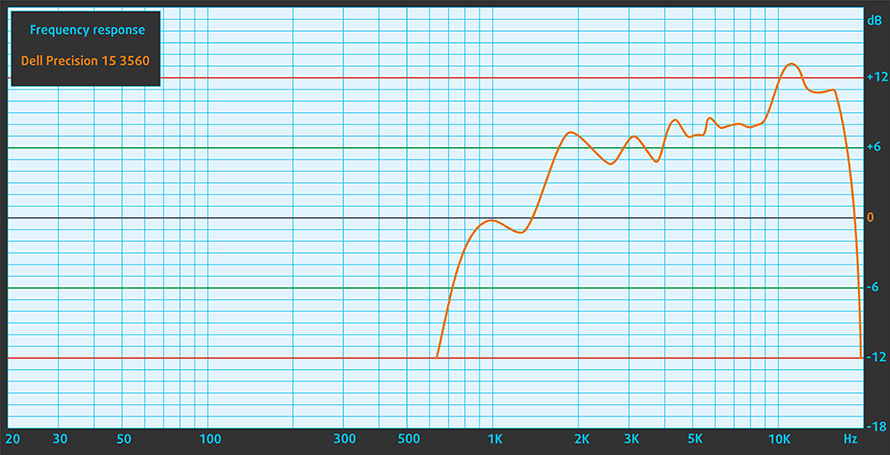
Drivers
All of the drivers and utilities for this notebook can be found here: https://www.dell.com/support/home/en-us/product-support/product/precision-15-3560-laptop/drivers
Battery
Now, we conduct the battery tests with Windows Better performance setting turned on, screen brightness adjusted to 120 nits, and all other programs turned off except for the one we are testing the notebook with. This notebook has a 63Wh battery pack, which lasts for 14 hours and 48 minutes of Web browsing, and 12 hours and 44 minutes.
Per simulare le condizioni reali, abbiamo utilizzato un nostro script per la navigazione automatica su oltre 70 siti web.

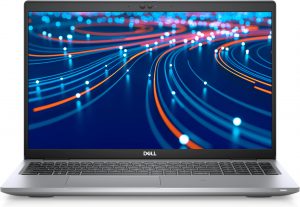
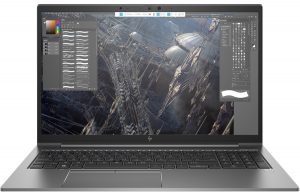
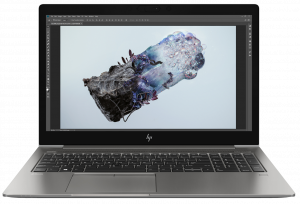
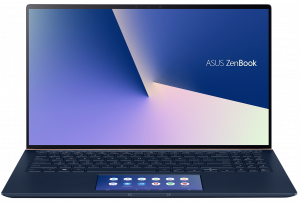

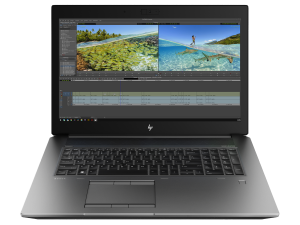
Per ogni test come questo, utilizziamo lo stesso video in HD.







CPU options
This notebook comes with one of the following processors – Core i5-1135G7, Core i5-1145G7, Core i7-1165G7, and Core i7-1185G7.
I risultati provengono dal test CPU Cinebench 20 (più alto è il punteggio, meglio è)
I risultati provengono dal nostro test di Photoshop (più basso è il punteggio, meglio è)
Dell Precision 15 3560 Varianti della CPU
Qui potete vedere un confronto approssimativo tra le CPU che si trovano nei modelli [serie] sul mercato. In questo modo potrete decidere da soli quale sia il modello della [serie] con il miglior rapporto qualità/prezzo.
Nota: il grafico mostra le diverse configurazioni di CPU più economiche, pertanto è necessario verificare le altre specifiche di questi portatili facendo clic sul nome del portatile / CPU.
I risultati provengono dal test CPU Cinebench R23 (più alto è il punteggio, meglio è)
I risultati provengono dal nostro test di Photoshop (più basso è il punteggio, meglio è)
GPU options
In addition to the 80EU and 96EU versions of the integrated Iris Xe Graphics G7, you can get the pro-grade NVIDIA Quadro T500, which is based on the GeForce MX450.
I risultati provengono dal benchmark 3DMark: Time Spy (Graphics) (più alto è il punteggio, migliore è il risultato).
I risultati provengono dal benchmark 3DMark: Fire Strike (Grafica) (più alto è il punteggio, meglio è)
I risultati provengono dal benchmark Unigine Superposition (più alto è il punteggio, migliore è il risultato)
Dell Precision 15 3560 Varianti GPU
Qui potete vedere un confronto approssimativo tra le GPU che si trovano nei modelli [serie] sul mercato. In questo modo potrete decidere da soli quale sia il modello della [serie] con il miglior rapporto qualità/prezzo.
Nota: il grafico mostra le diverse configurazioni di GPU più economiche, pertanto è necessario verificare le altre specifiche di questi portatili facendo clic sul nome del portatile / GPU.
I risultati provengono dal benchmark 3DMark: Time Spy (Graphics) (più alto è il punteggio, migliore è il risultato).
I risultati provengono dal benchmark 3DMark: Fire Strike (Grafica) (più alto è il punteggio, meglio è)
I risultati provengono dal benchmark 3DMark Wild Life (più alto è il punteggio, meglio è) I risultati provengono dal benchmark 3DMark: Wild Life (Graphics) (più alto è il punteggio, meglio è)
I risultati provengono dal benchmark Unigine Superposition (più alto è il punteggio, migliore è il risultato)
Gaming tests

| CS:GO | HD 1080p, Low (Check settings) | HD 1080p, Medium (Check settings) | HD 1080p, MAX (Check settings) |
|---|---|---|---|
| Average FPS | 102 fps | 68 fps | 32 fps |

| DOTA 2 | HD 1080p, Low (Check settings) | HD 1080p, Normal (Check settings) | HD 1080p, High (Check settings) |
|---|---|---|---|
| Average FPS | 105 fps | 66 fps | 40 fps |
Temperatures and comfort
Max CPU load
In this test we use 100% on the CPU cores, monitoring their frequencies and chip temperature. The first column shows a computer’s reaction to a short load (2-10 seconds), the second column simulates a serious task (between 15 and 30 seconds), and the third column is a good indicator of how good the laptop is for long loads such as video rendering.
Average core frequency (base frequency + X); CPU temp.
| Intel Core i5-1135G7 (15W TDP) | 0:02 – 0:10 sec | 0:15 – 0:30 sec | 10:00 – 15:00 min |
|---|---|---|---|
| Dell Precision 15 3560 | 3.77 GHz (B+57%) @ 95°C @ 46W | 3.37 GHz (B+40%) @ 99°C @ 36W | 2.61 GHz (B+9%) @ 85°C @ 21W |
| Dell Latitude 15 5520 | 3.62 GHz (B+51%) @ 98°C @ 46W | 3.17 GHz (B+32%) @ 97°C @ 34W | 2.27 GHz @ 77°C @ 17W |
| Lenovo ThinkBook 14 Gen 2 | 3.79 GHz (B+58%) @ 90°C @ 47W | 3.47 GHz (B+45%) @ 90°C @ 39W | 3.05 GHz (B+27%) @ 79°C @ 28W |
| Dell XPS 13 9310 | 3.15 GHz (B+31%) @ 100°C @ 40W | 2.73 GHz (B+14%) @ 100°C @ 30W | 1.65 GHz @ 73°C @ 15W |
| Dell Vostro 14 5402 | 3.02 GHz (B+26%) @ 99°C @ 29W | 2.61 GHz (B+9%) @ 99°C @ 25W | 2.00 GHz @ 76°C @ 15W |
| MSI Modern 15 (A11X) | 3.59 GHz (B+50%) @ 94°C @ 44W | 3.45 GHz (B+44%) @ 95°C @ 40W | 3.18 GHz (B+33%) @ 91°C @ 34W |
| Lenovo ThinkBook 14s Yoga | 3.52 GHz (B+47%) @ 94°C | 3.24 GHz (B+35%) @ 94°C | 2.63 GHz (B+10%) @ 75°C |
| Lenovo Yoga 7 (14) | 3.34 GHz (B+39%) @ 94°C | 2.97 GHz (B+24%) @ 94°C | 2.39 GHz @ 75°C |
| Acer Aspire 5 (A514-54) | 3.54 GHz (B+48%) @ 87°C | 2.01 GHz @ 66°C | 2.03 GHz @ 67°C |
Given the fact that this notebook has exactly the same cooling setup and hardware as the Latitude 15 5520, we get pretty close results. And the higher frequency of the Precision 15 3560 is justified by its 8°C higher temperature.
Comfort during full load
And while the fan can be clearly heard in the first minute or two of stress testing, it gradually spins down and maintains a comfortable working experience.
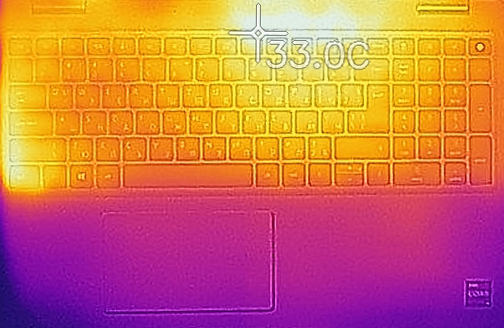
Verdict
Dell’s latest Precision 15 3560 is a bit underwhelming because of its lack of identity. Ultimately, it is a rebrander Latitude 15 5520, which is generally not bad, if it offered something exclusive. Probably the only thing that we found is different, is the boost ideology of the processor. Instead of throttling the CPU down to 17W, like the Latitude we just mentioned, the Precision stabilizes at 21W under extreme workload scenarios.
Indeed, this adds a bit more performance, especially in workstation-like loads. And the Quadro T500 will definitely bring more to the table, should you opt for it. Of course, NVIDIA’s notorious certifications will come in handy, if your work consists of 2D and 3D modeling. On the other side, the T500 won’t be powerful enough for projects that consist of a lot of data, because of its relatively small 2GB video memory. And the TU117 chip, which is the same, used in the MX450 doesn’t really have the power to crush numbers, as much as its bigger Turin and Ampere siblings.
Dell Precision 15 3560’s IPS panel (VNCT2-156DL02 (NCP0057)) has a Full HD resolution, comfortable viewing angles, good contrast ratio, and a non-flickering backlight above 88 nits. Keep in mind that above that value (corresponding to 40% in Windows), the pulsations have a low frequency, and using our Health-Guard profile will eliminate the negative effect. Also, it had a low color coverage of only 55% of the sRGB gamut, and our unit showed a high nonuniformity of the colors, compared to the middle of the screen.
Now, you have to know that in terms of features, this device comes near the top spot with its two Thunderbolt 4 connectors, MicroSD card slot, optional SIM card support, as well as the also optional Smart Card reader, IR face recognition, paired with a Full HD Web camera and privacy shutter.
Add to that the two RAM SODIMM slots, which fit up to 64GB in total, and work in dual-channel mode plus the two M.2 PCIe x4 slots, one of which actually supports Gen 4 drives, and you get a rather future-proof piece of technology.
And although it has a mediocre touchpad that has no dedicated buttons, and provides a questionable tracking experience, the battery life is on point. We got about 14 hours and 48 minutes of Web browsing, and 12 hours and 44 minutes of video playback.
So, if we have to give an answer to the question “Do mobile workstations cope with the demand”, we have to say both yes, and no. There are a ton of laptops that have extremely powerful hardware, like the HP ZBook 17 G6, or the Lenovo ThinkPad P52, but they are not very lenient on your shoulders. On the other hand, the ULV CPUs, and low-power GPUs don’t yet have the juice to run through demanding projects.
Pros
- Wide I/O, which includes a MicroSD card reader
- Two M.2 storage slots, one of which runs at 4.0 speeds + 2x RAM SODIMM slots
- Fingerprint reader embedded in the power button + optional IR face recognition
- Wi-Fi 6, PCIe x4, Thunderbolt 4
- Doesn’t use PWM above 88 nits (40%) (VNCT2-156DL02 (NCP0057))
- Comfortable keyboard with a backlight
- Good battery life
Cons
- Covers only 53% of sRGB (VNCT2-156DL02 (NCP0057))
- Drops the dedicated touchpad buttons and the trackpoint + unsatisfactory touchpad experience
- High price
You can check the prices and configurations in our Specs System: https://laptopmedia.com/series/dell-precision-15-3560/
